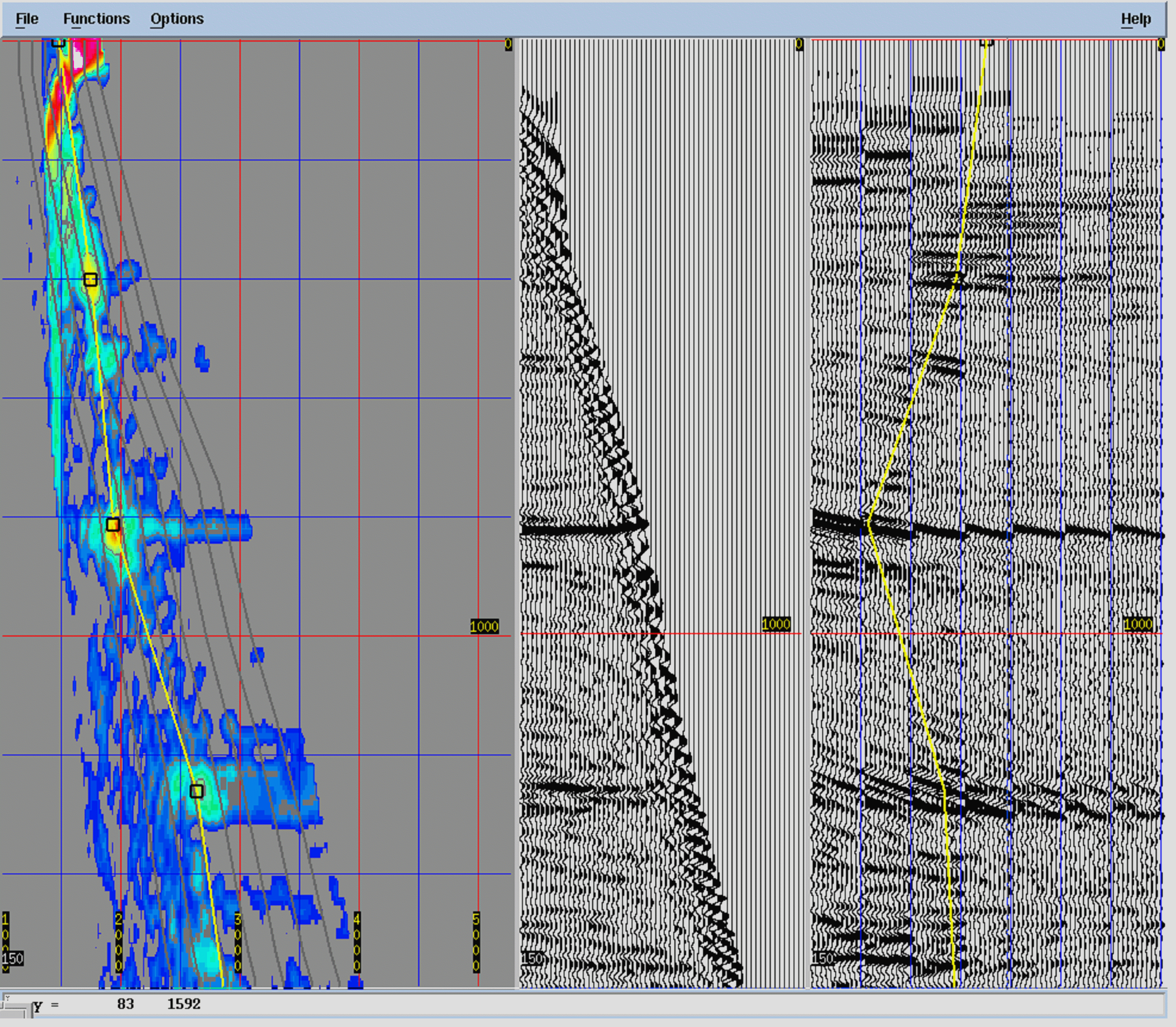
Stacking velocity refers to the velocity used to stack or sum common midpoint gathers from surface seismic surveys. The method for determining stacking velocity uses the principle that a reflections in a common midpoint gather have a hyperbolic shape due to moveout, but instead of computing the velocity based on a small spread as in the NMO velocity method, it attempts to find the velocity that best fits the entire spread.
Stacking velocities from are usually picked from velocity spectra determined by a performing cross-correlation, normalized cross-correlation, or semblance calculation using short time windows on the traces in the common-midpoint gathers. The spectra are displayed as contour plots or gated row plots. The figure below is from a typical velocity analysis tool and shows a velocity semblance on the left, the common midpoint gather that the semblance was derived from in the center and a multi-velocity function stacks on the right. All are plotted on the same time scale on the vertical axis. The semblance plot has velocity as the horizontal axis with the lowest velocity on the left. The squares on the velocity semblance are the velocity picks, either made manually or computed, and the yellow line gives the velocity interpolated between the picks. The CMP gather is corrected for moveout using the picked velocity, so if the velocities are correct the reflection events in the in the traces should be horizontal. Each group of traces in the multi-velocity function display is a collection of stacks made using a constant velocity, with the stacks made using the lowest velocity on the left. The picked velocity is plotted over the stacks. This allows the velocity interpreter to see what reflection events the velocities are picked. The interpreter can also verify that the picked velocities produce the maximum sum in the stacks , that is that there is not a velocity that produces a better stack.

Figure 3 Stacking velocity analysis